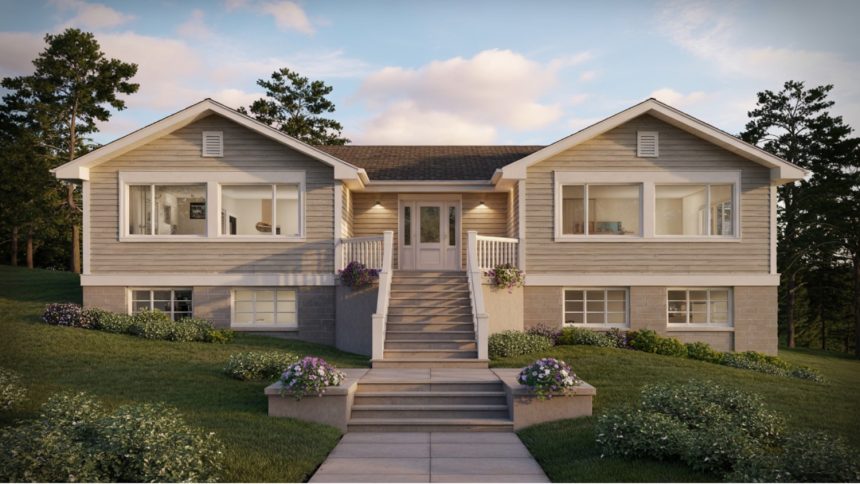Are you looking for a home style that offers value and space? Finding a house that fits your needs, budget, and lifestyle can be tough.
Raised ranch homes have become very popular with first-time buyers and those wanting to get more for their money. They combine useful features with smart design to make the most of every inch.
This blog will help you to know more about raised ranch homes. You’ll learn what makes them different from other house types and why they might be right for you.
By the end, you’ll have a clear picture of whether this practical home style fits your family’s needs, both now and in the future.
What Is a Raised Ranch Home?
A raised ranch home is a specific house design with two levels where you enter on a middle landing between floors. When you walk in the front door, you’ll find stairs going up to the main living area and stairs going down to the lower level.
The main floor often includes the kitchen, dining room, living room, and bedrooms. The lower level typically contains extra rooms like a family room, extra bedrooms, laundry, and storage. Most raised ranch homes have a built-in garage on the lower level.
These homes became common in the 1960s and 1970s as a way to create extra living space without the cost of a full two-story house. They remain useful options for many homebuyers today.
Key Advantages of Raised Ranch Homes
Efficient Use of Space
Raised ranch homes offer a smart layout that makes great use of limited lot space. The stacked design fits more rooms into a smaller footprint than a typical one-story home.
The split-level design creates clear zones for different activities. Families enjoy having main living spaces separate from more private areas like bedrooms.
With compact yet open floor plans, these homes avoid wasted hallway space while still feeling roomy and open.
Enhanced Privacy
The level separation in raised ranch homes creates natural privacy between areas. This makes them ideal for families with different schedules or needs.
Bedrooms on the upper level stay removed from the hustle of everyday activities, helping with sleep quality and noise control.
The lower level offers a perfect spot for teenagers, guests, or hobbies that need some separation from the main living space.
Natural Light and Views
The elevated main living areas in raised ranch homes bring in more sunlight through larger windows than a standard ranch home.
The higher position often means better views of your yard and neighborhood from the main living spaces.
Corner windows and sliding glass doors (common in raised ranch designs) help create bright, pleasant spaces throughout the year.
Versatile Lower Level
The lower level provides extra space that works for many purposes. It can become a home office, game room, gym, guest suite, or even a rental unit.
With separate access often available, the lower level lets you welcome visitors without disrupting the main home areas.
These spaces can grow and change as your family’s needs shift over time, from playroom to teen hangout to home business.
Cost-Effective Construction
Raised ranch homes cost less to build than many other styles because they use simple, straight rooflines and basic structural elements.
The compact footprint means less foundation work and less exterior siding, which keeps material costs down.
Heating and cooling systems can work more efficiently with the partially-below-grade lower level, which stays naturally cooler in summer and warmer in winter.
Raised Ranch vs. Other Home Styles: A Comparison
This comparison will help you to understand better how raised ranch homes are different from traditional ranches and two-story colonials, which are two of the most common alternative housing styles.
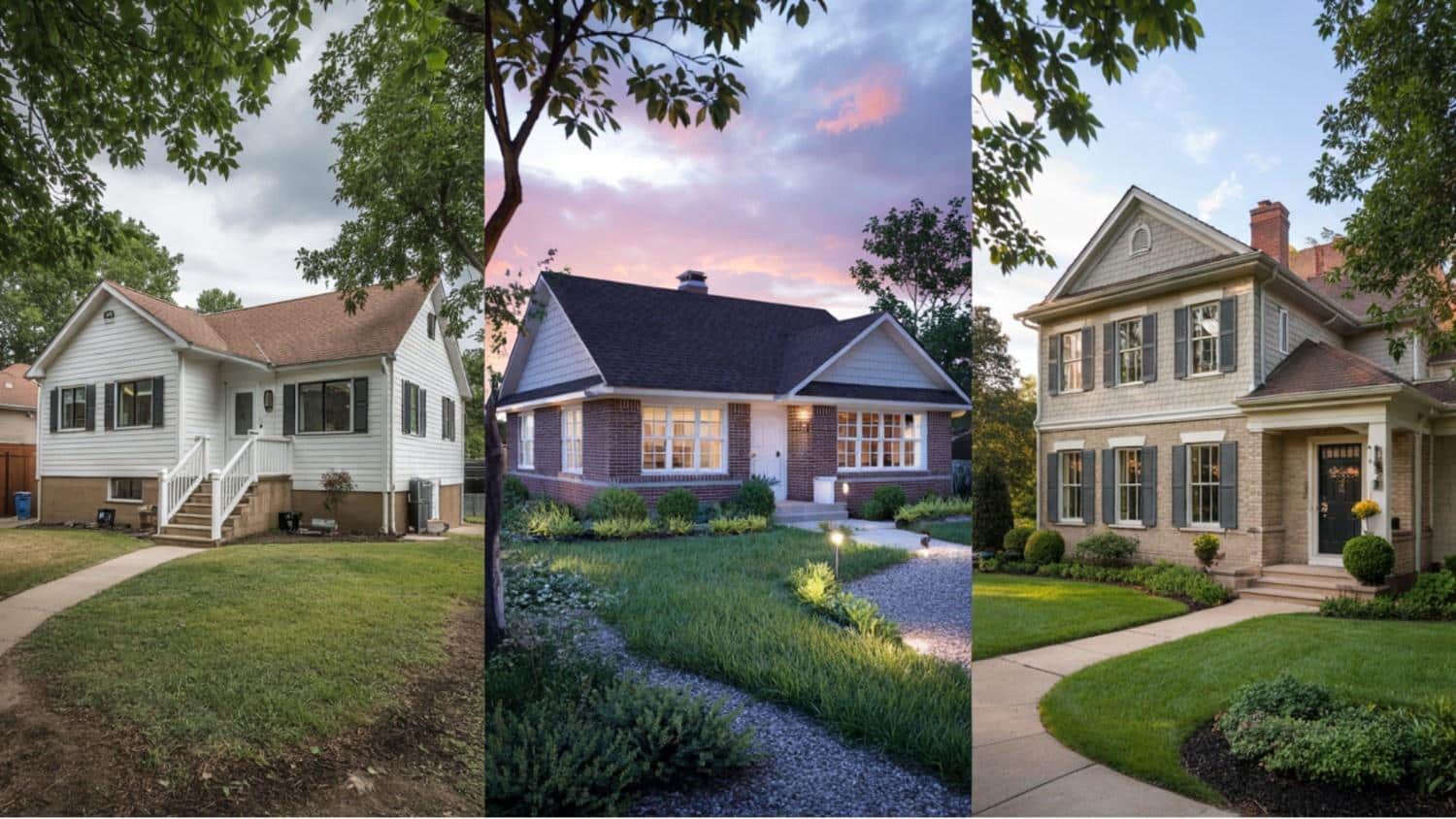
| Feature | Raised Ranch | Traditional Ranch | Two-Story Colonial |
|---|---|---|---|
| Levels | 2 connected levels | 1 level | 2 distinct levels |
| Entry | Mid-level with stairs up/down | Ground level | First floor with stairs up |
| Layout | Compact, efficient | Spread out | Formal separation |
| Cost | Moderate | Moderate | Higher |
| Yard Usage | More yard space | Less yard space | Less yard space |
| Stairs | Unavoidable | Few or none | Full flight |
| Privacy | Good between levels | Less separation | Good floor separation |
| Construction | Simple | Very simple | More complex |
| Basement | Walkout/daylight | Often crawlspace | Full |
Landscaping Ideas for Raised Ranch Homes
1. Front Yard Focus
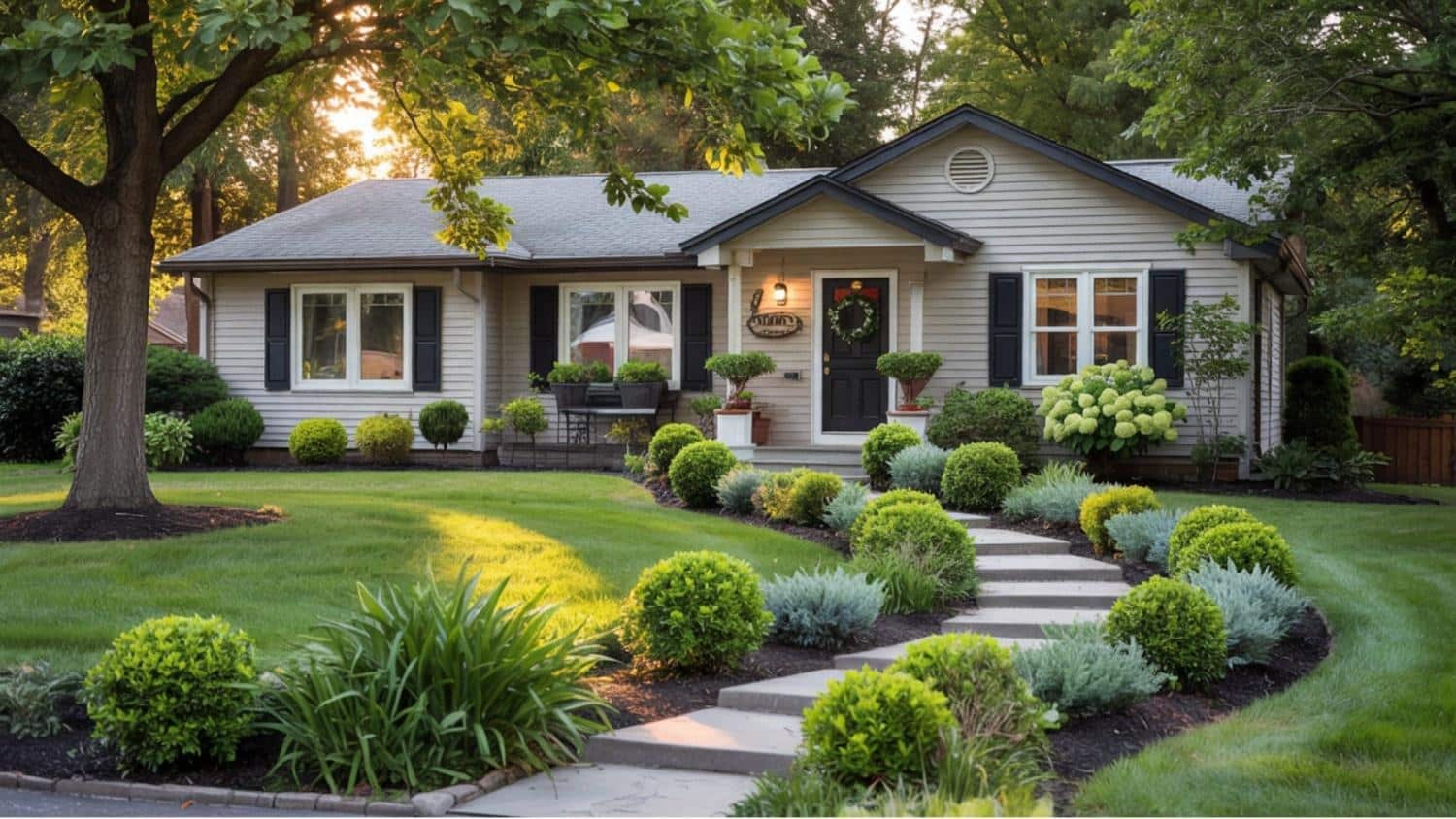
Create tiers of plants that follow the home’s natural height. Use low shrubs near the driveway and taller plants closer to the house.
2. Split-Entry Enhancement
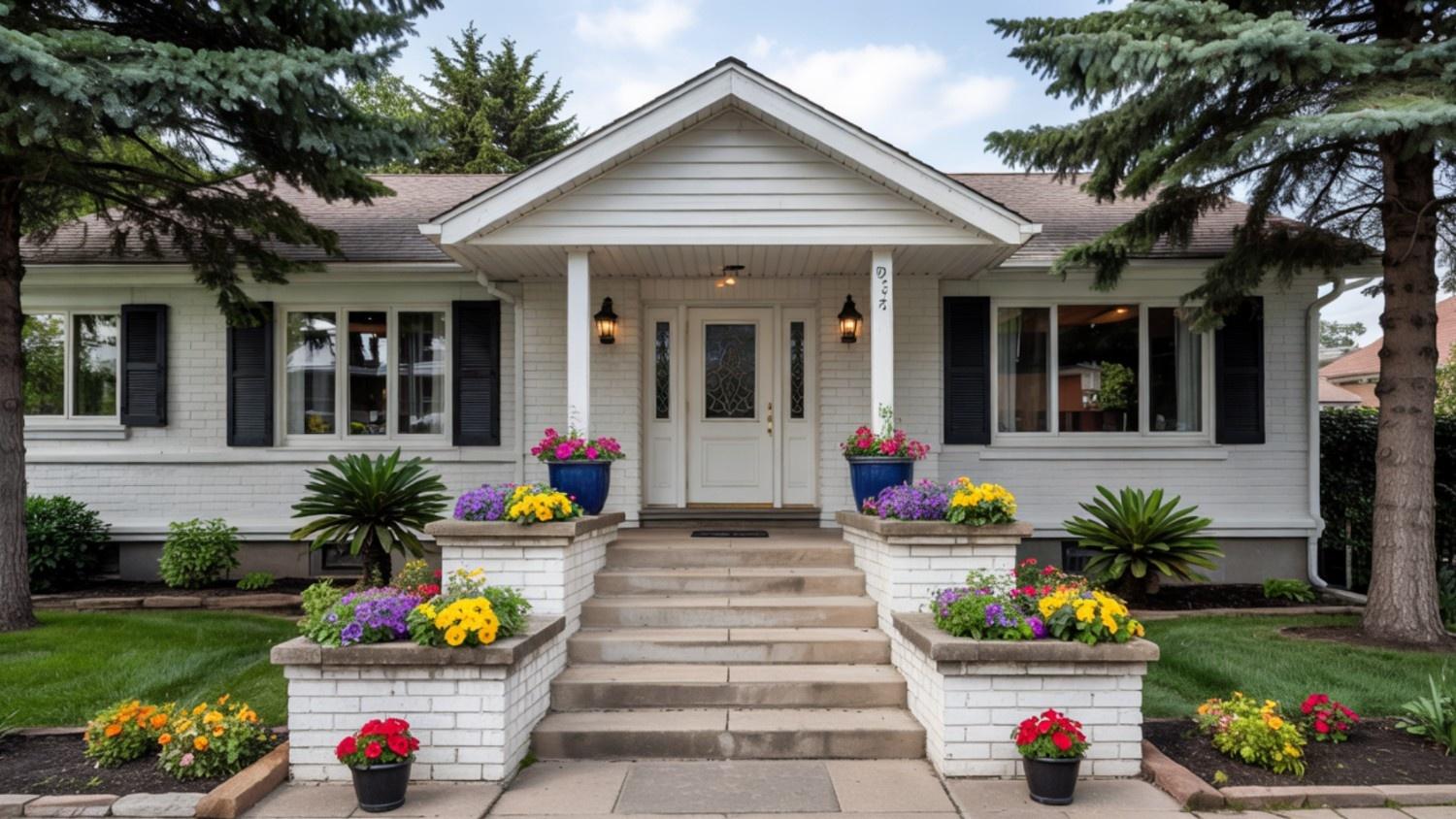
Install planters or garden beds on both sides of the entry stairs. This draws the eye and makes the entrance more friendly.
3. Retaining Walls
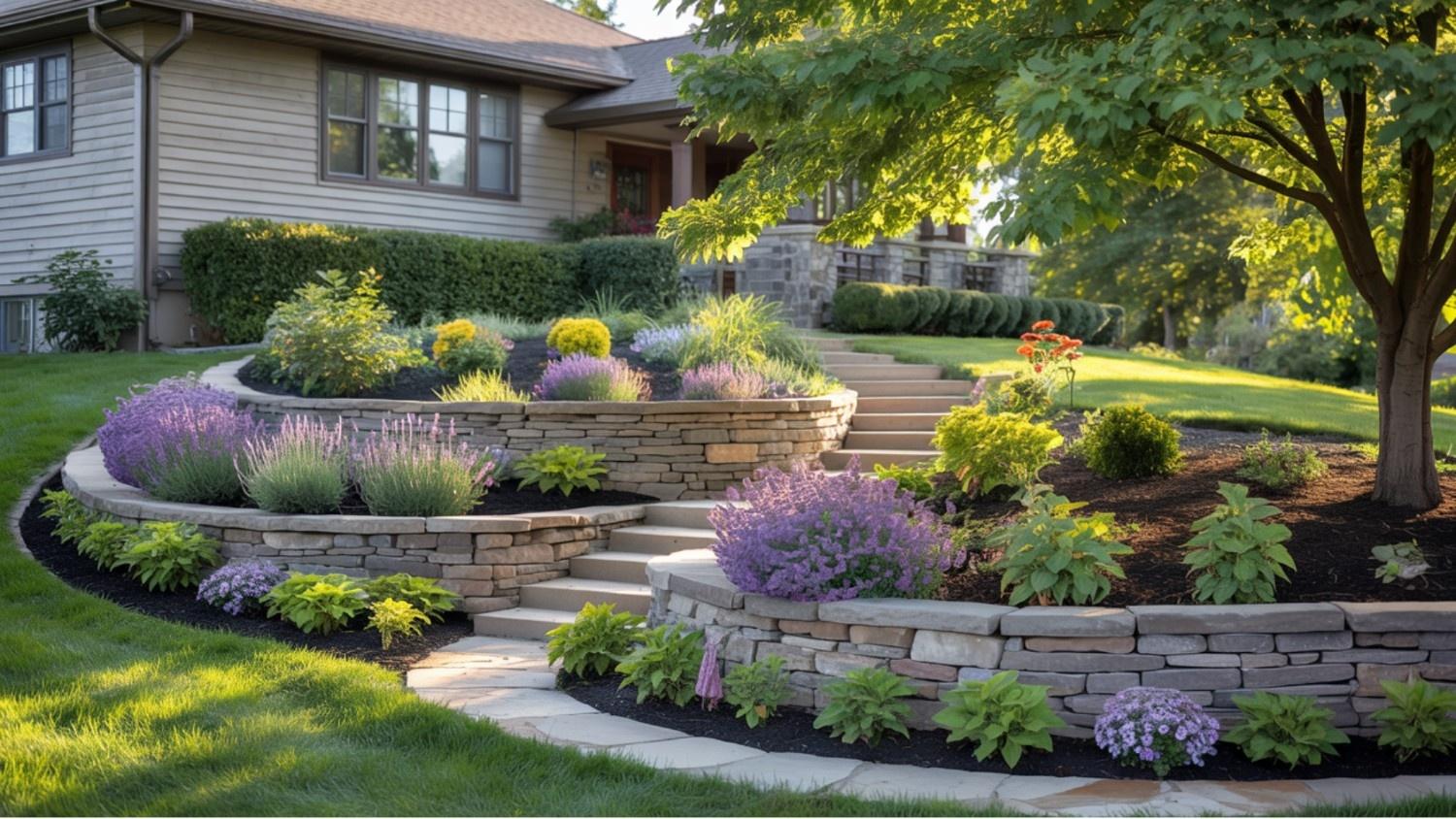
Turn slopes into useful spaces with short walls that create flat planting areas. These can match your home’s materials for a put-together look.
4. Side Yard Paths
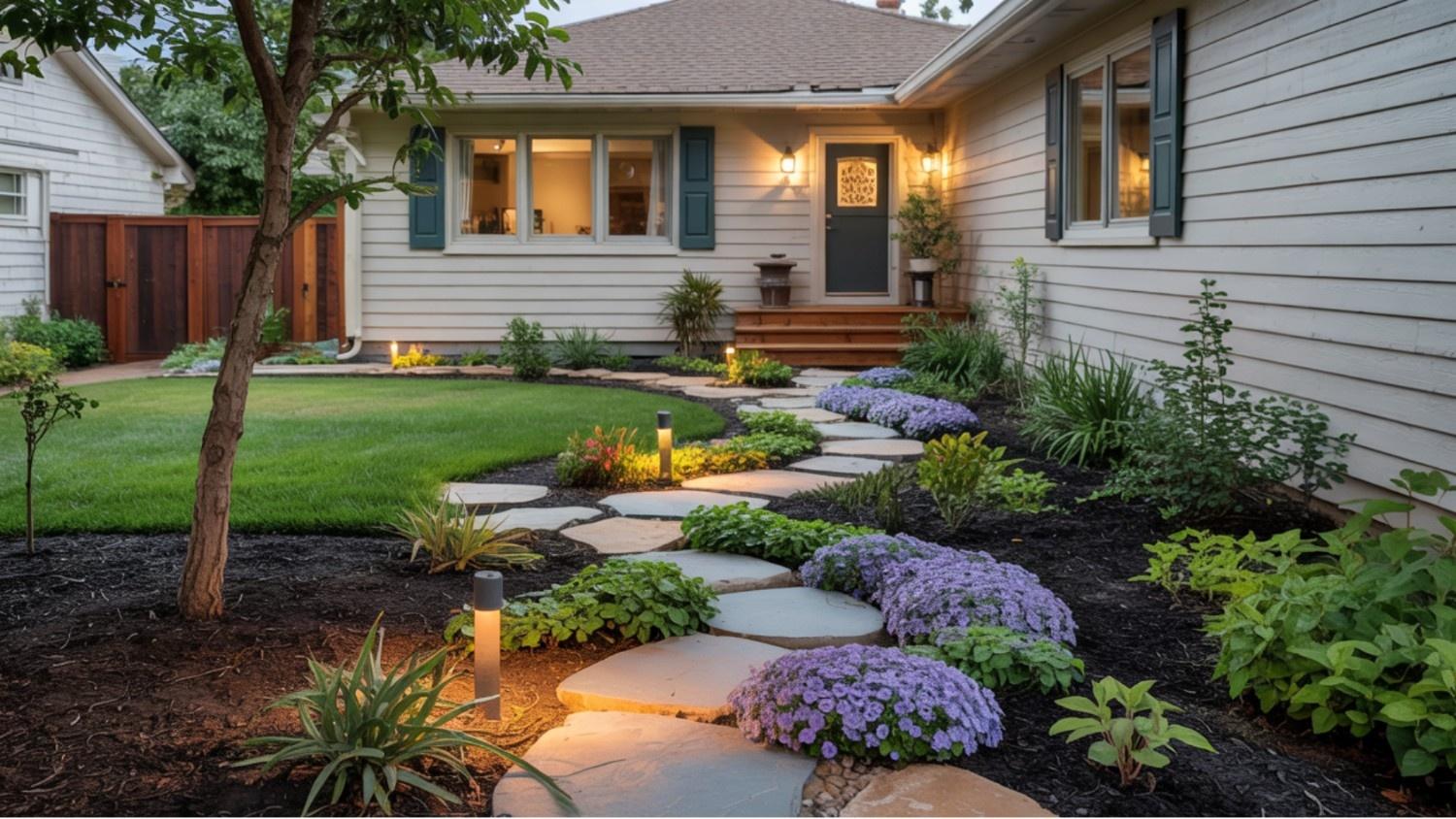
Connect front and back yards with winding stone or gravel paths. Add ground cover plants between stones for a soft effect.
5. Back Yard Zones
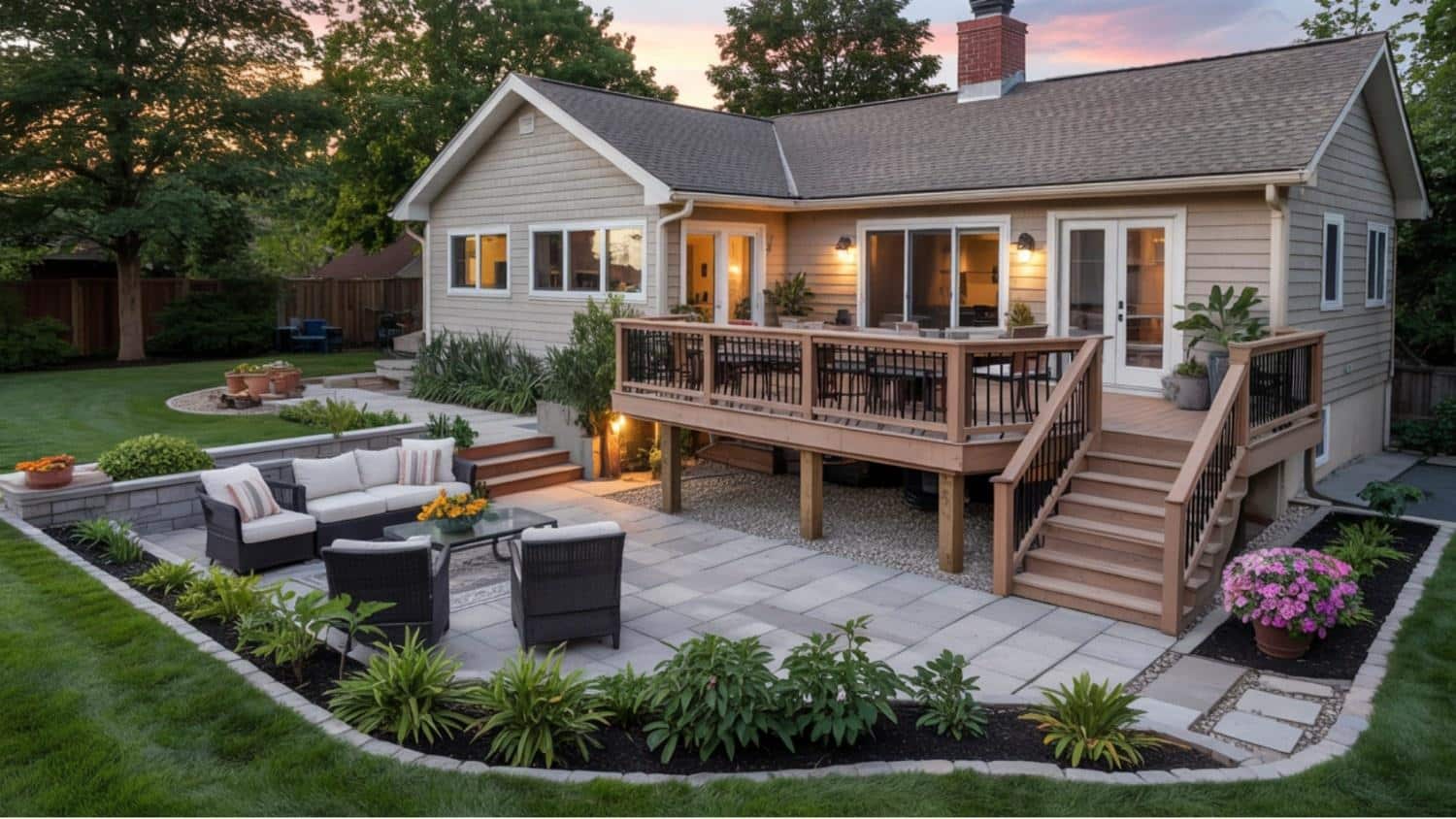
Create outdoor rooms that link to both levels of your home. A patio off the lower level and a deck from the main level double your options.
6. Privacy Screens
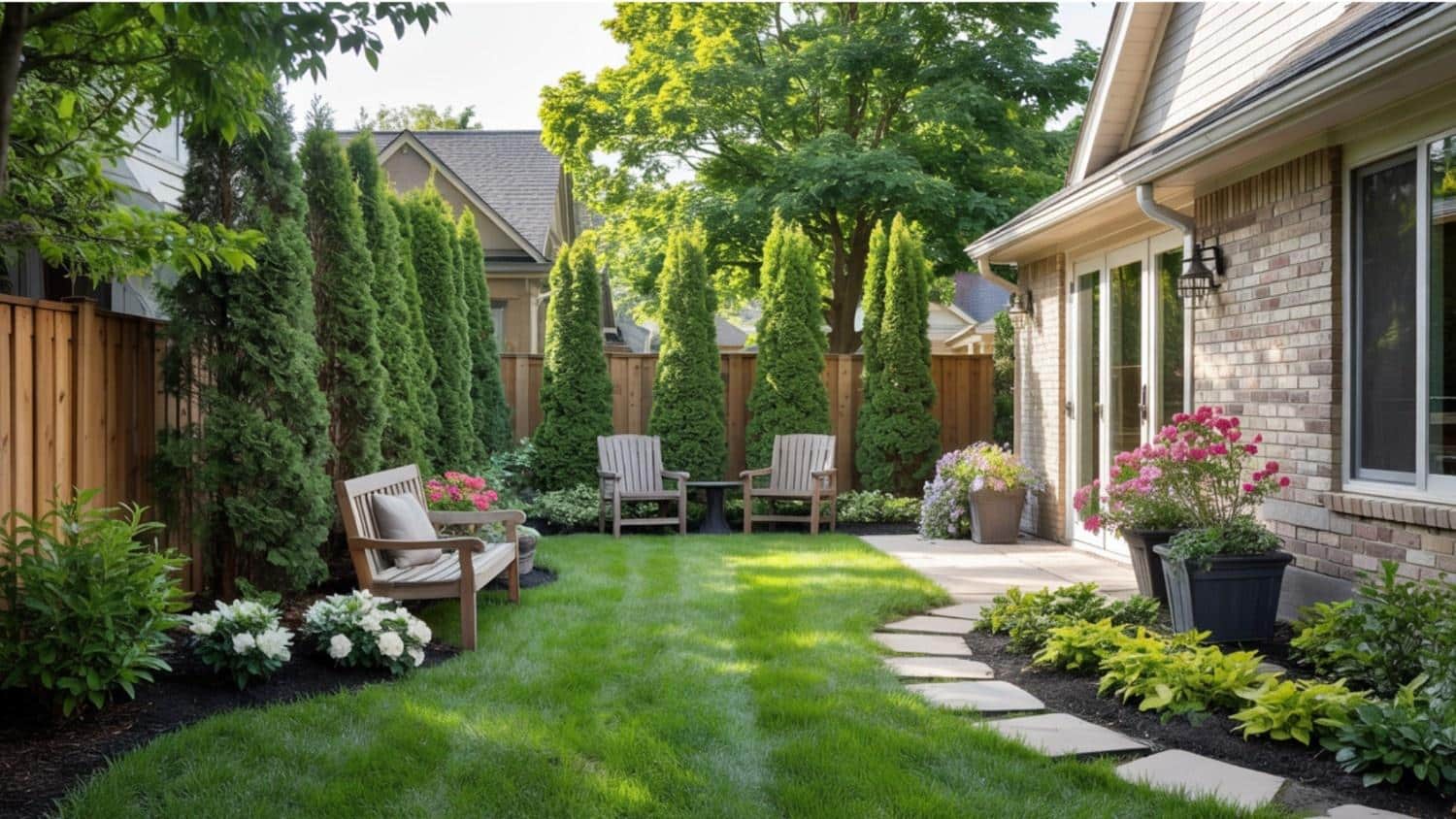
Plant tall, narrow trees where neighbors might see in. Arborvitae or columnar maples work well without taking much space.
Tips for Enhancing a Raised Ranch Home
- Open the main floor by removing non-load-bearing walls between the kitchen, dining, and living spaces.
- Update the entryway with a wider staircase, modern railing, and better lighting.
- Add a deck off the back of the main level to create an outdoor living space with good views.
- Finish the lower level with warm flooring, good lighting, and bright wall colors.
- Create a walkout from the lower level if your lot allows it.
- Replace small windows with larger ones to bring in more natural light.
- Install French doors or sliding glass doors to connect to outdoor spaces.
- Update exterior siding with mixed materials to add visual interest.
- Paint the front door a bold color to create a focal point.
- Add built-in storage to maximize the useful space on both levels.
Considerations Before Choosing a Raised Ranch
- Stair requirements are part of daily life in raised ranch homes. Consider how this might affect family members with mobility issues, both now and in the future.
- Front entrance design of raised ranches can feel formal or dated. Many owners update this area to create a more welcoming first impression.
- Outdoor connection works differently in raised ranches—you may need to add a deck or patio to create a smooth indoor-outdoor flow.
- Lower ceiling heights and less natural light affect downstairs spaces. Good planning for lighting and finishes can help these areas feel brighter.
- Layout updates may be needed in older raised ranch homes to match today’s open-concept preferences. Be ready for some renovation if you buy an older model.
Conclusion
Now you know about the raised ranch homes. These practical houses offer good value, useful space, and flexible options for many different family situations.
The two-level design creates natural zones for privacy, while the smart layout helps you make the most of your building budget. The versatile lower level can adapt to your changing needs, from extra bedrooms to home offices.
Before you make your decision, think about how well a raised ranch matches your specific needs. Consider your family size, daily routine, and long-term plans for the space.
If you want a home that balances cost with function, a raised ranch might be just what you’re looking for in your next home purchase.
Frequently Asked Questions
How Can I Improve the Curb Appeal of My Raised Ranch?
Update the front door, add layered landscaping, use mixed siding materials, and install new outdoor lighting fixtures.
Are Raised Ranch Homes Good for Aging in Place?
They present challenges due to necessary stair use, but main-floor modifications can make one level fully accessible if needed.
Can I Remove Walls to Create Open Concept Spaces in A Raised Ranch?
Yes, many interior walls aren’t load-bearing, especially between the kitchen and dining areas. Always check with a structural engineer first.

